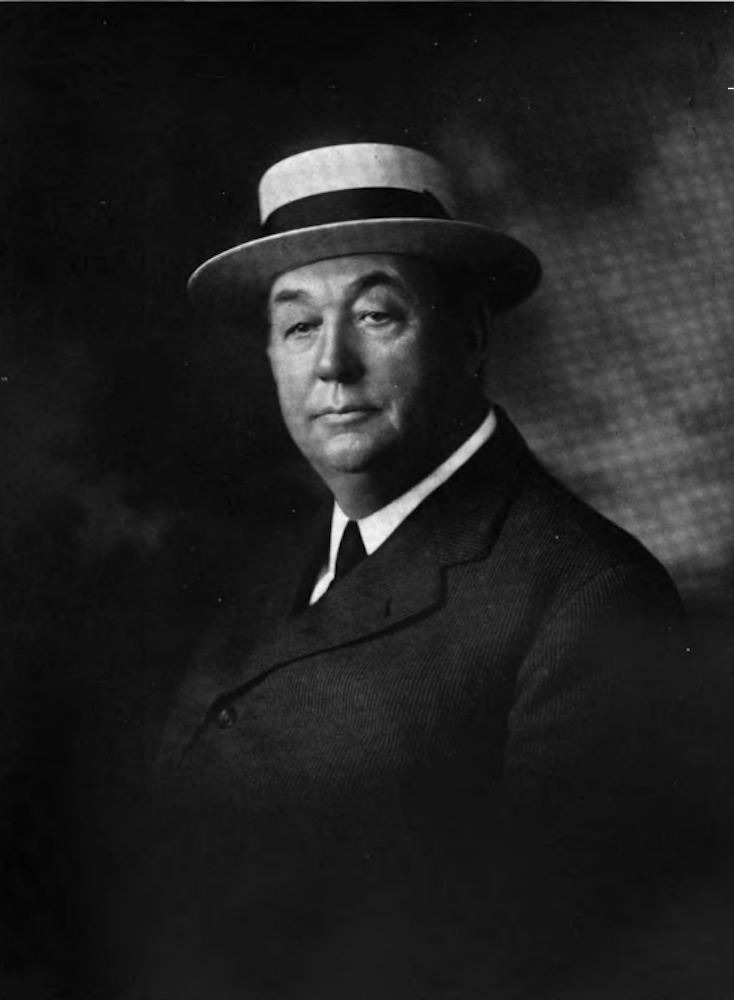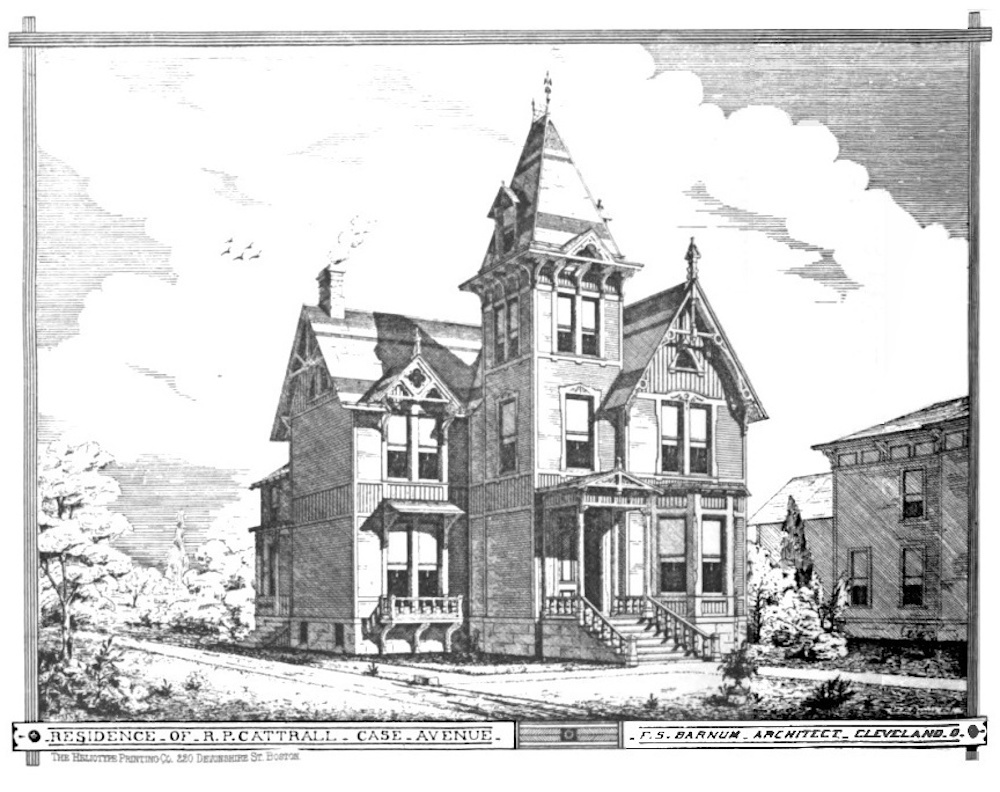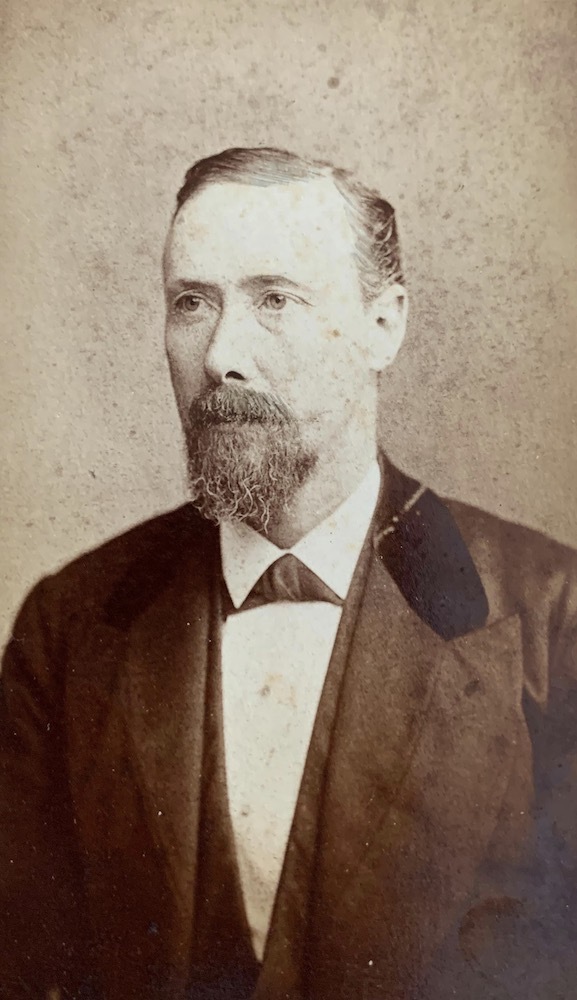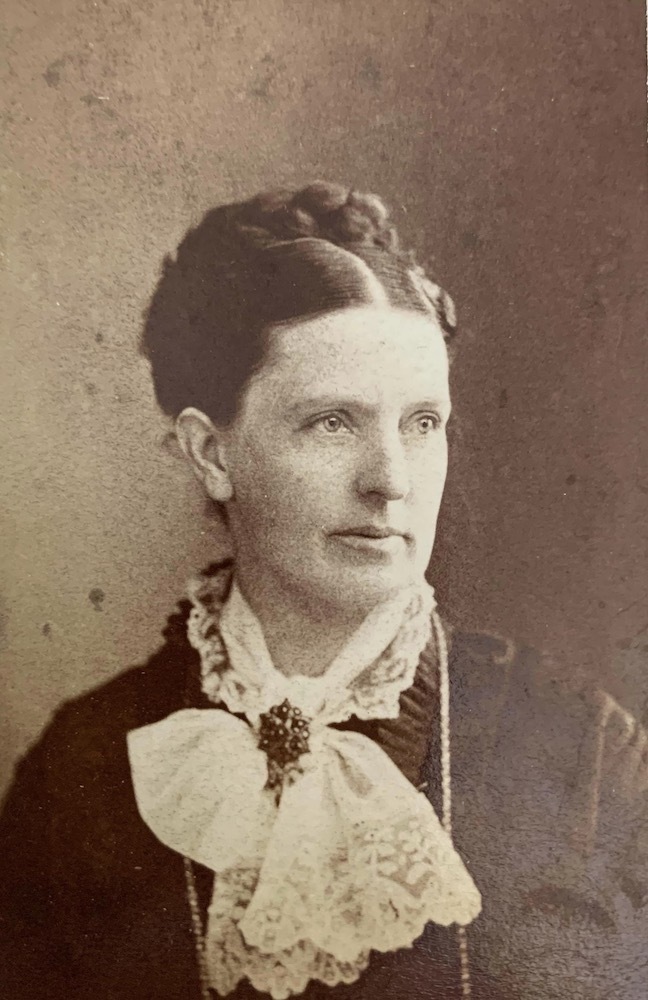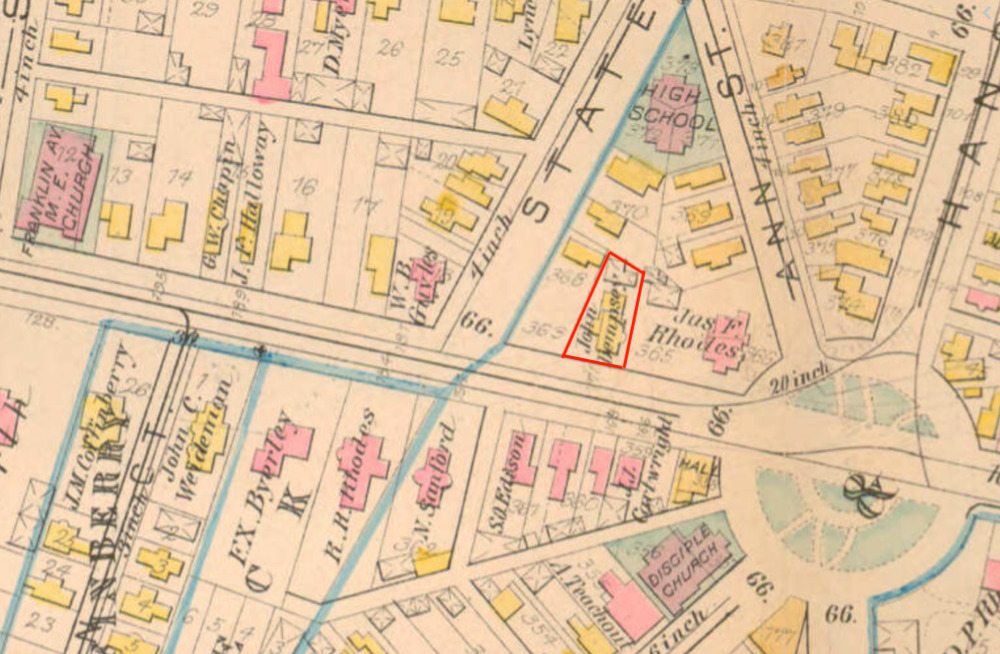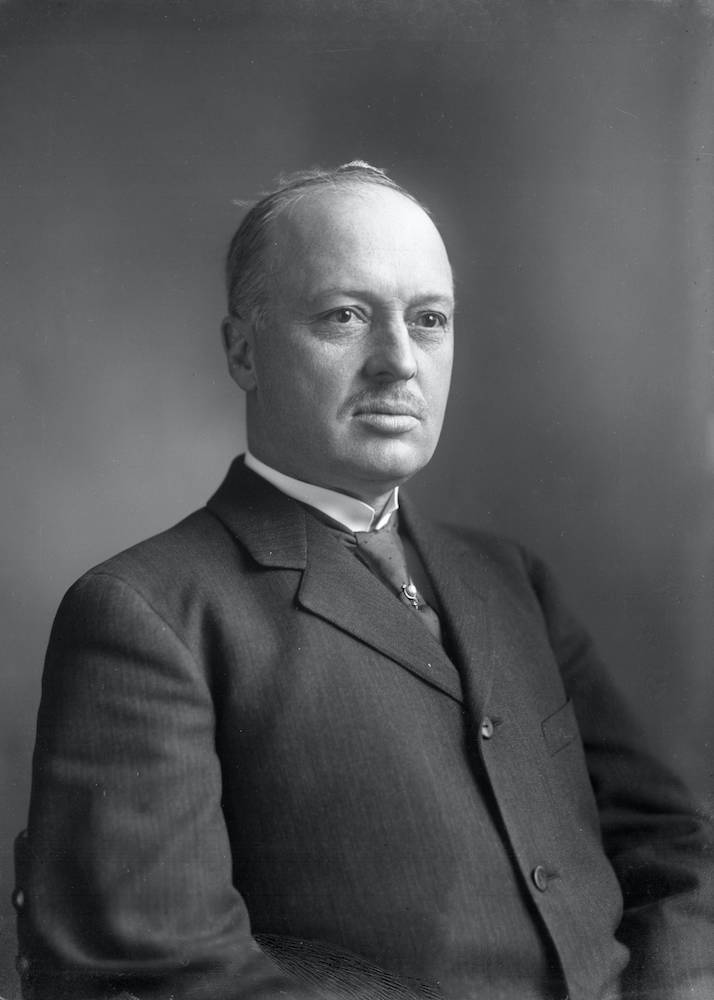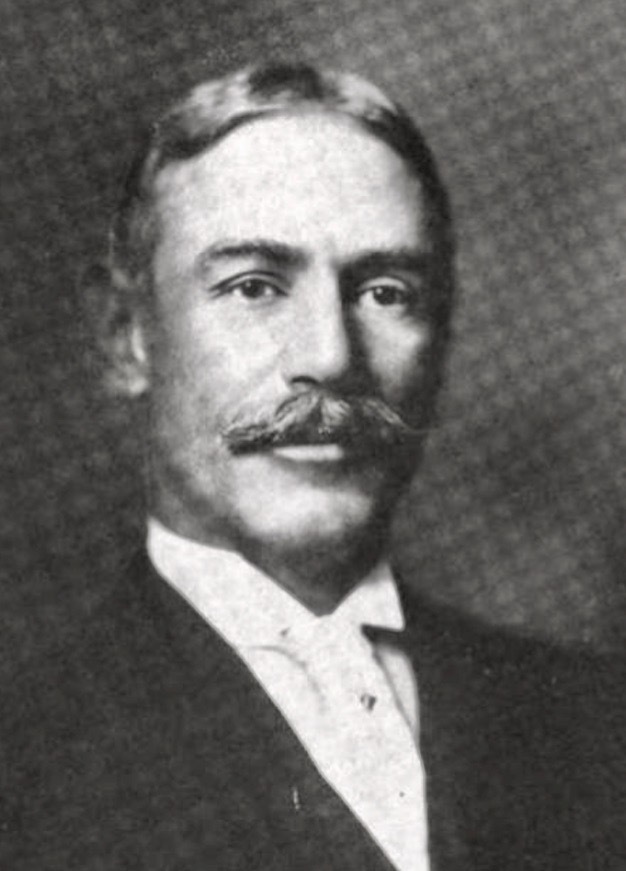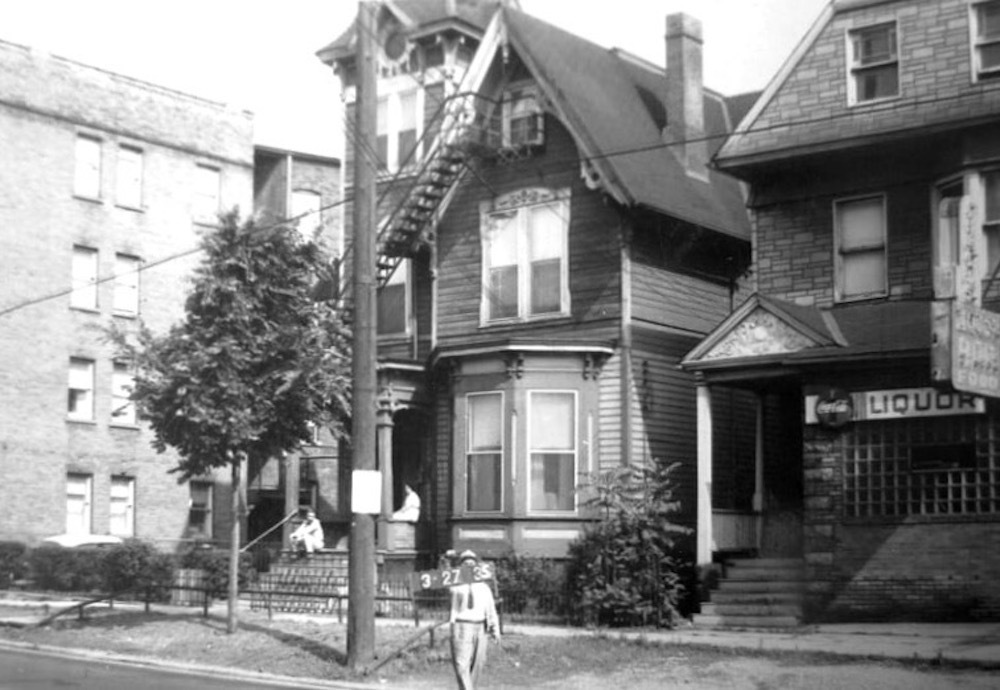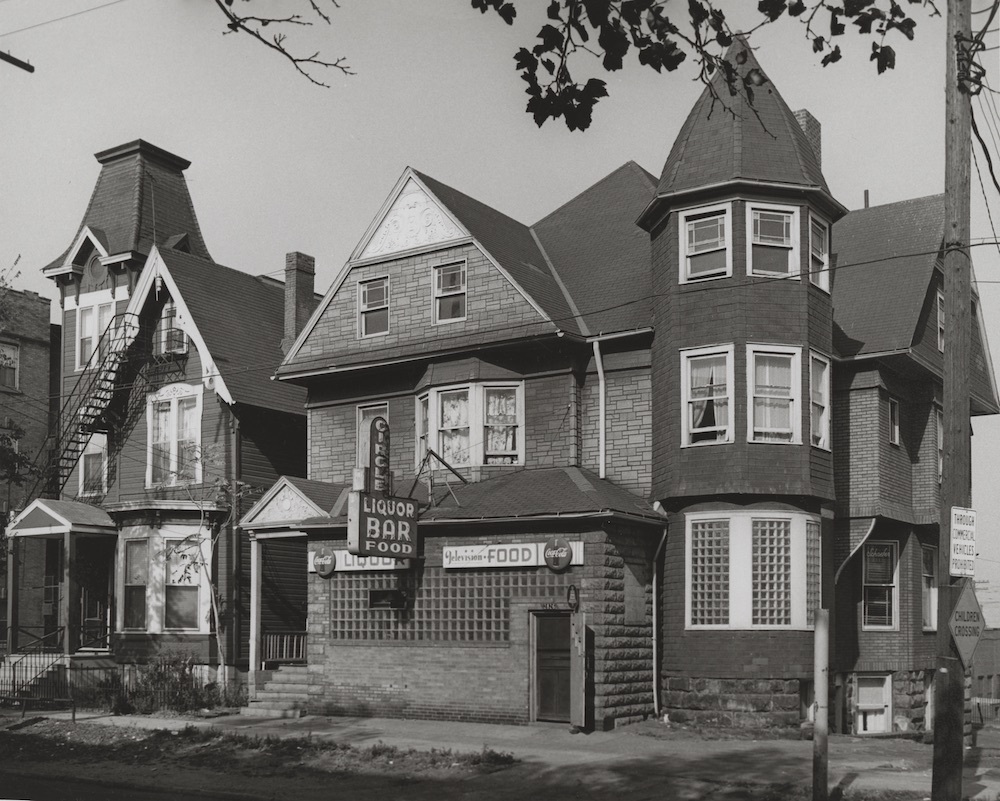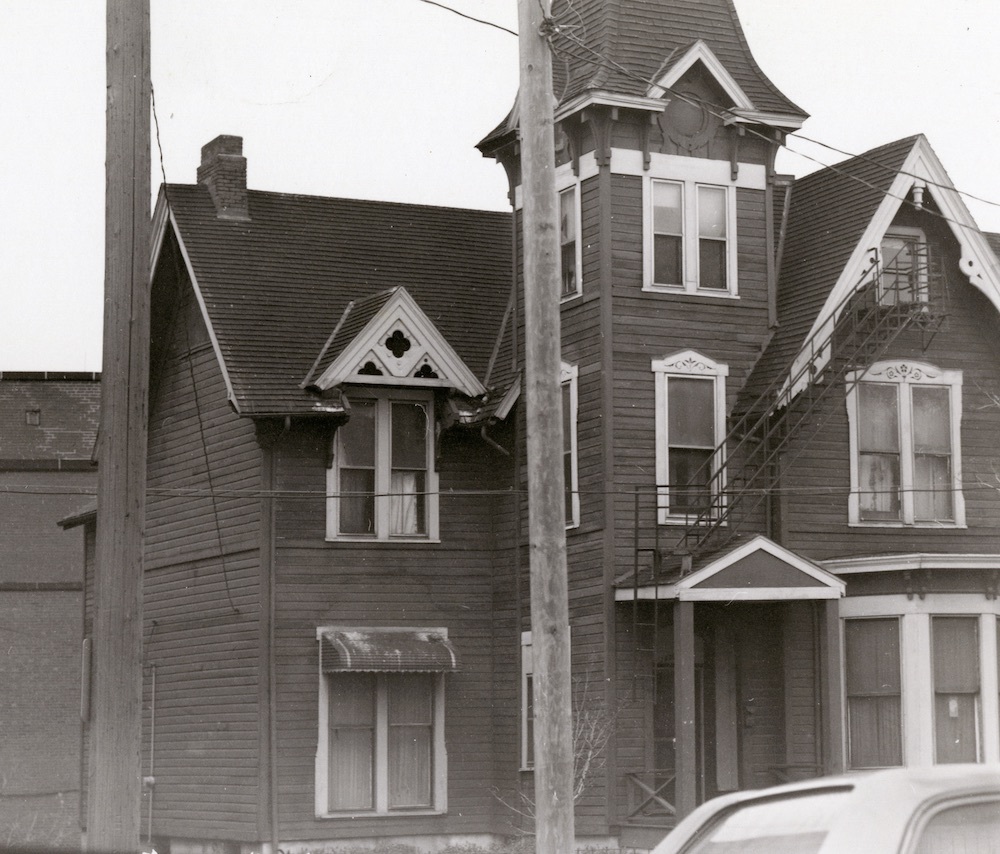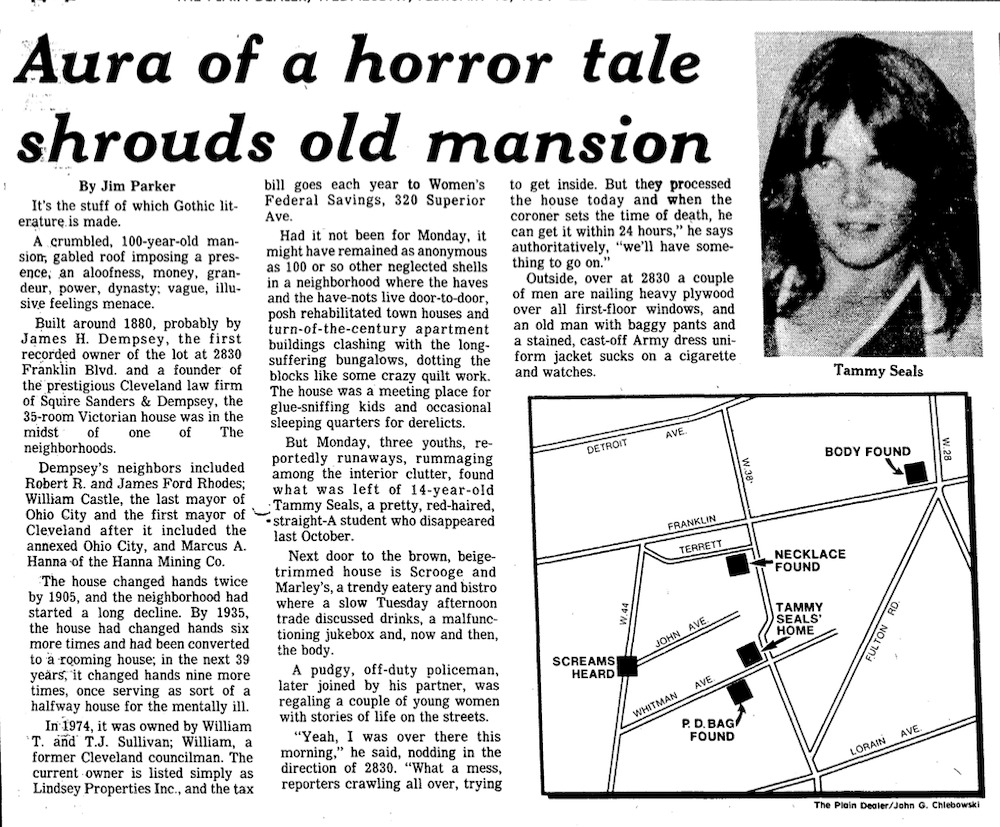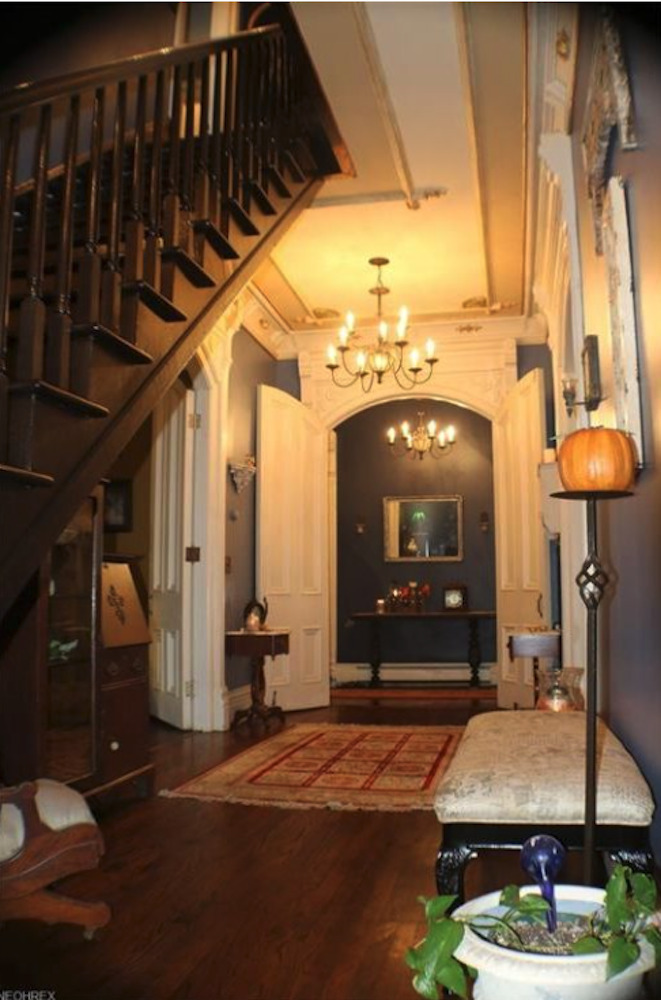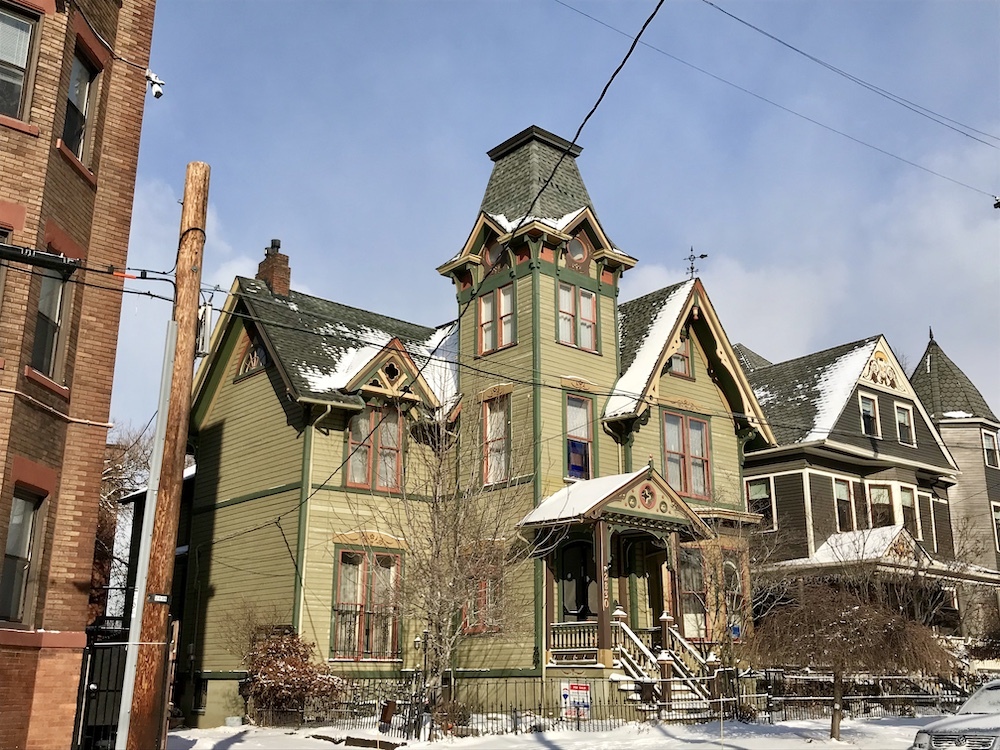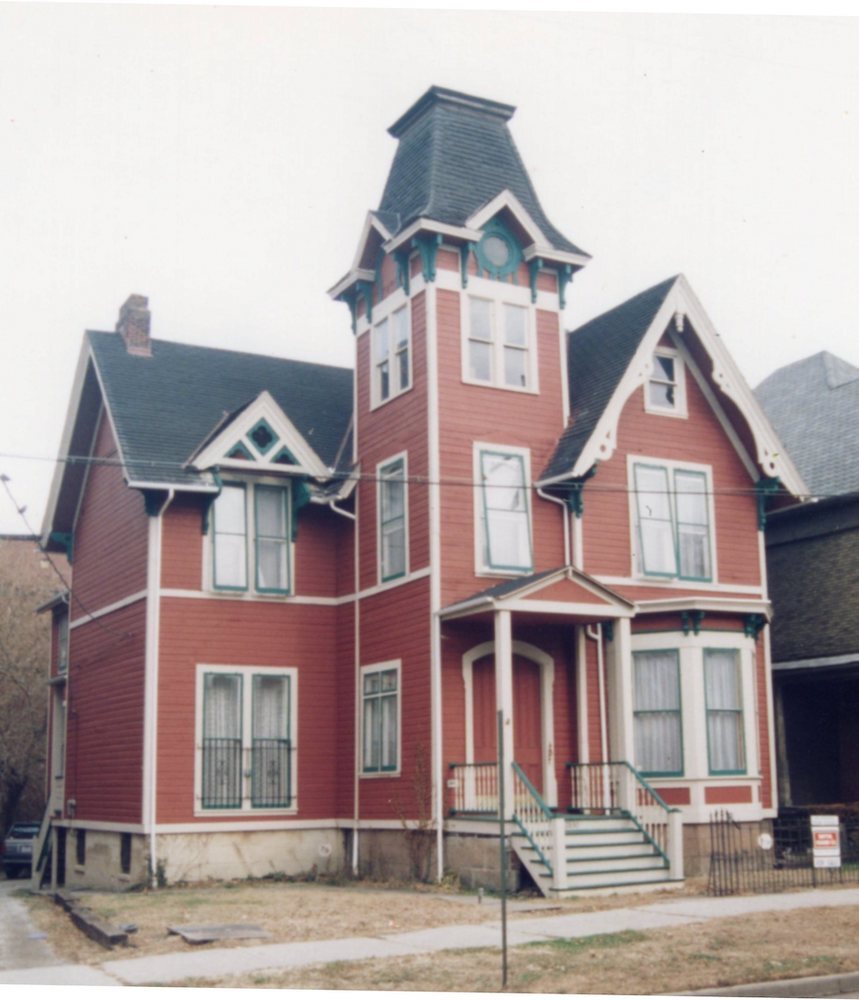
There is a myth circulating in Cleveland that the house at 2830 Franklin Boulevard was built in 1872 for Frederick W. Pelton, Cleveland's 22nd mayor. Like many myths, it is not true. The house was neither built in 1872, nor was it built for Mayor Pelton. When it was built, who it was built for, and what prominent family first resided in it is the subject of this story.
In the mid-afternoon hours of July 28, 1880, Col. John Dempsey, a banker from Shelby, Ohio, a small town in Richland County located about 80 miles southwest of Cleveland, appeared at a sheriff's sale being held on the south steps of the Cuyahoga County Courthouse, in downtown Cleveland. There, he made a successful bid to purchase an elegant house that was designed by a reputable Cleveland architectural firm and located on the west side's grand Franklin Avenue. The house had been built in 1879 for Ceilan Milo Spitzer, who, like Dempsey, was a banker. However, before Spitzer could even move into his new house in early 1880, creditors of his German-American Bank, which had recently failed, forced its sale.
How and why John Dempsey came to Cleveland on July 28, 1880, to purchase the house that today has the address of 2830 Franklin Boulevard is lost to history. However, the long path which eventually brought him to Cleveland is more easily discernible. Dempsey was born on May 27, 1829, in Mountrath, Queens County, Ireland to James and Catherine Key Dempsey. In 1848, during the Great Famine in Ireland, his family immigrated to the United States, settling first in Sandusky, Ohio, where five members of the family, including his father and four of his siblings, died during a cholera outbreak. By 1860, he had married Martha Davis and had moved to Richland County, where he was a merchant and Martha was raising their first child, one-year old son James. Dempsey's business career was interrupted by the Civil War which broke out that year. He joined a militia and gained military fame as one of the "Squirrel Hunters" who defended Cincinnati from a threatened invasion by Southern troops in 1862. Later, he served in the 48th Ohio Infantry and 163rd Ohio Voluntary Infantry, rising to the rank of Lieutenant-Colonel. After the war's conclusion, Col. Dempsey returned to Richland County where in a short time he amassed a fortune in the wholesale grocer and banking businesses and was reputed to be the wealthiest man in the county. By 1871, he was semi-retired and breeding race horses on his farm called "Mohican" in nearby Plymouth Township. Retirement--even semi-retirement--may not have suited John Dempsey and that may well have been why he decided in 1880 to move to Cleveland, then the second largest city in Ohio, to find new opportunities and to grow his commercial empire. In addition to purchasing the mansion on Franklin Avenue in July of that year, the following spring he erected a new commercial building on Bank (West 6th) Street and also became active in Cleveland's banking circles. In 1886, Dempsey became president of the newly chartered Euclid Avenue National Bank.
The house which John Dempsey purchased on Franklin Boulevard in 1880 had been designed by the architectural firm of Coburn and Barnum. Two and one-half stories tall and with nearly 4,000 square feet of living space, its design mirrored almost exactly that of another house on Case Avenue (East 40th Street), south of Cedar Avenue, that Frank Barnum had designed just three years earlier. The late 1870s was a period of transition for residential architecture in the United States, with interest in the Italianate style waning and enthusiasm for the new Queen Anne style not yet fully developed. Barnum's design for the house at 2830 Franklin may therefore be called "eclectic," according to Cleveland architectural historian Craig Bobby, its elements drawing inspiration from several different architectural styles. Its general massing, with its tower tucked into the "L" of the house, is borrowed from the Italian Villa style, as is the shallow bay on the first floor, right side of the house. The bracketing of the eves of the tower also suggests the Italianate style, but the tower's flat-topped cap reflects a Second Empire influence, and the house's gabled roof is not typical of Italianate houses. The house's design also borrows from the Gothic Revival style, particularly the quatrefoils on the projection from the left side of the roof and the barge boards along the eves of the gabled roof on the right side of the house. The current porch is not part of the original design.
Moving into the grand house on Franklin Avenue with John Dempsey and his wife Martha in 1880 were their daughters Mary Katherine (19), Nellie (12) and Florence (3). Their son James, then a 21 year old college student, was living in Gambier, Ohio, where he was attending classes at Kenyon College. During school breaks at Kenyon, and later during breaks at Columbia University where he attended law school, James resided with his parents in their house on Franklin Avenue. According to biographers, the first legal employment he found in Cleveland was in 1883 with the downtown law firm of Estep, Dickey and Squire. Two of the named partners, Moses Dickey and Andrew Squire were, like John Dempsey, Franklin Avenue residents. Andrew Squire lived in a house--since razed--that sat on the lot of what today is the Lutheran Family Services building at 4100 Franklin Boulevard, and Moses Dickey lived just a stone's throw away up the street at what is today 4211 Franklin Boulevard. It is no stretch of imagination to believe that law student James H. Dempsey was first introduced by his father to neighbors Moses Dickey and Andrew Squire, and that John Dempsey's business reputation and his residency on Franklin Avenue were important factors in the law firm's decision to hire James. In 1884, James H. Dempsey became a licensed attorney in Ohio, and, just six years later, he and Andrew Squire, along with Judge William B. Sanders, formed a new firm they called Squire, Sanders and Dempsey, which in the twentieth century became one of Cleveland's most prestigious law firms, specializing in corporate and municipal bond law. Today, the firm is known as Squire Patton Boggs, and it has become an international law firm that employs thousands of lawyers and has offices in twenty different countries around the world.
In 1892, just two years after his son co-founded Squire, Sanders and Dempsey, Col. John Dempsey again retired from business, this time for good. In retirement, he spent winters living in the house on Franklin Avenue in Cleveland and summers at his beloved Mohican Farm down in Richland County, where he died in August 1904. During this period, the Spitzer-Dempsey House became the year round residence of John Dempsey's oldest daughter, Mary Katherine, and her husband Ernest Cook, a prominent Cleveland lawyer and a close friend of James H. Dempsey. After Mary Katherine's untimely death in 1898, Ernest and the couple's four children remained in the house on Franklin Avenue, which later was bequeathed to them out of the estate of John Dempsey. Even after his children grew up and moved out, Ernest continued to live in the house until his death in 1929.
By the time Ernest Cook died in 1929, Franklin Avenue, which had been renamed Franklin Boulevard in 1921, was well into its transformation from a grand avenue lined with the beautiful single family houses of Cleveland's west side elite to a much less grand avenue with many of its beautiful houses razed and others converted into retail establishments, apartments or crowded rooming houses. After Cook's death, the Spitzer-Dempsey House too transformed. The 1930 federal census identified four families living at 2830 Franklin Boulevard in that year. Ten years later, according to the 1940 census, nine families were now living in the house. By 1945, according to an ad in the Plain Dealer, the house had 11 furnished suites. Following its conversion into a multi-family dwelling, the the house slowly deteriorated over the years, especially during the second half of the twentieth century, reflecting the general decline in the condition of Cleveland's housing stock and the rapid decline of the city's population during this period. By the 1980s, the Spitzer-Dempsey house was, like many other older houses on the near west side of Cleveland, vacant and in disrepair. In 1981, it acquired local notoriety when the body of a murdered west side teenage girl was discovered in one of its upstairs rooms. In the mid-1990s, the house experienced renewal, as many houses in Ohio City did, when it was rehabilitated by two lawyers who converted it into their law office. One of the lawyers later also made it her residence. Today, the Spitzer-Dempsey House is once again one of the grand and desirable residences on Franklin Boulevard in Ohio City.
Images

